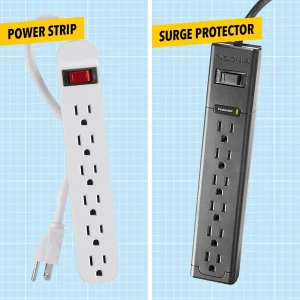Lightning arrester, also known as surge arrester, plays a crucial role in protecting electrical systems and equipment from the destructive effects of lightning strikes and voltage surges. In this article, we will delve into the main purpose of lightning arrester and explore its key functions, advantages, materials used, quality considerations, and associated costs.
Key Functions of Lightning Arrester
Lightning arrester serves several essential functions in electrical systems:
1. Surge Protection
The primary function of a lightning arrester is to safeguard electrical equipment and systems against voltage surges or transient overvoltages, often caused by lightning strikes. These surges can cause damage, downtime, and costly repairs if left unaddressed.
2. Diverting Lightning Strikes
Lightning arresters provide a low-resistance path for lightning currents to follow, diverting them away from sensitive equipment. By doing so, they prevent lightning from directly striking and damaging the equipment.
Advantages of Lightning Arresters
Lightning arresters offer numerous advantages:
1. Enhanced Equipment Lifespan
By limiting voltage surges, lightning arresters extend the lifespan of electrical equipment, reducing the need for frequent replacements and associated costs.
2. Improved System Reliability
Protecting against power surges ensures uninterrupted operation of critical systems, minimizing downtime and maximizing productivity.
3. Safety Assurance
Lightning arresters help prevent electrical fires, ensuring the safety of personnel and assets in industrial and residential settings.
Materials Used in Lightning Arresters
Lightning arresters are typically constructed using high-quality materials:
- Metal Oxide Varistors (MOVs): Commonly used in modern surge arresters, MOVs offer excellent surge protection capabilities and durability.
- Silicon Carbide: Another material used in surge arresters due to its ability to handle high surge currents and maintain low leakage currents.
- Fiberglass-Reinforced Plastic (FRP): Used for the housing of lightning arresters, as it provides insulation and protection against environmental factors.
Quality Considerations
Ensuring the quality of lightning arresters is crucial for their effectiveness:
- Reliability: High-quality surge arresters provide consistent protection over their entire lifespan.
- Speed of Response: A quick response time is essential to divert lightning currents promptly.
- Durability: Lightning arresters should withstand environmental conditions and continue functioning effectively.
Cost Considerations
The cost of lightning arresters can vary based on several factors:
- Size and Specifications: Larger and more powerful lightning arresters are typically more expensive.
- Installation: Professional installation may incur additional costs.
- Maintenance: Regular maintenance ensures optimal performance and can add to the overall cost.

Conclusion
In conclusion, lightning arresters, also known as surge arresters, are indispensable components in electrical systems. They protect against lightning strikes and voltage surges, enhancing equipment lifespan, system reliability, and overall safety. Choosing the right materials, ensuring quality, and considering costs are essential factors in their selection and installation.
For more information on surge arrester products and their applications, you can visit Thorspd Surge Protection.
